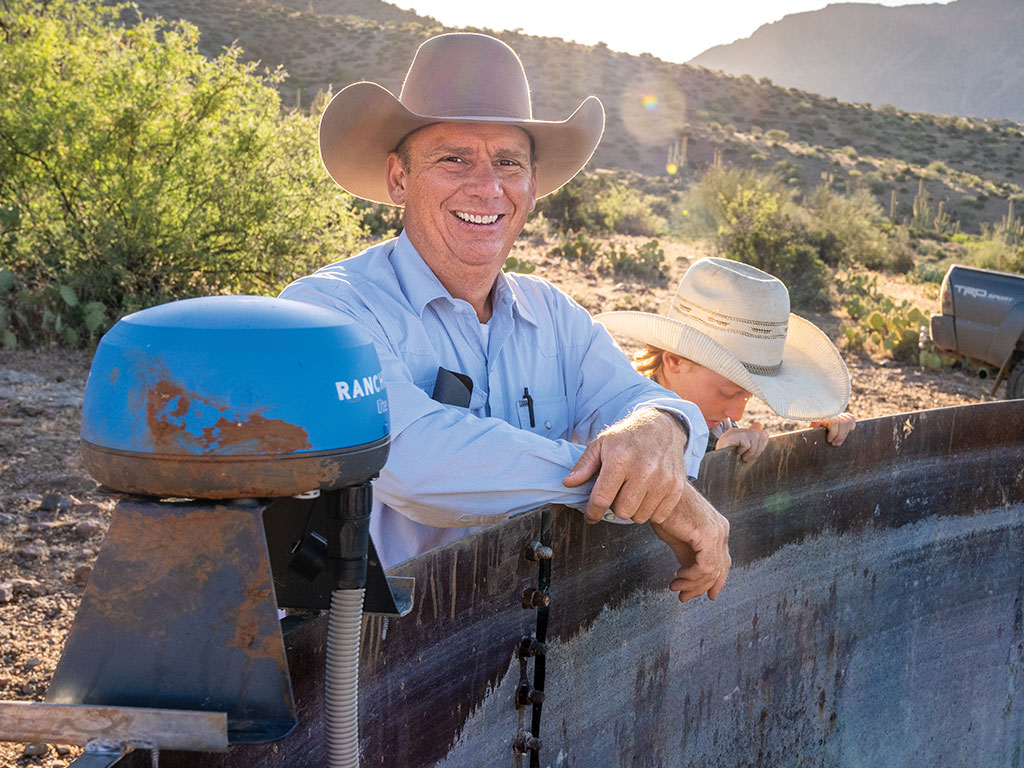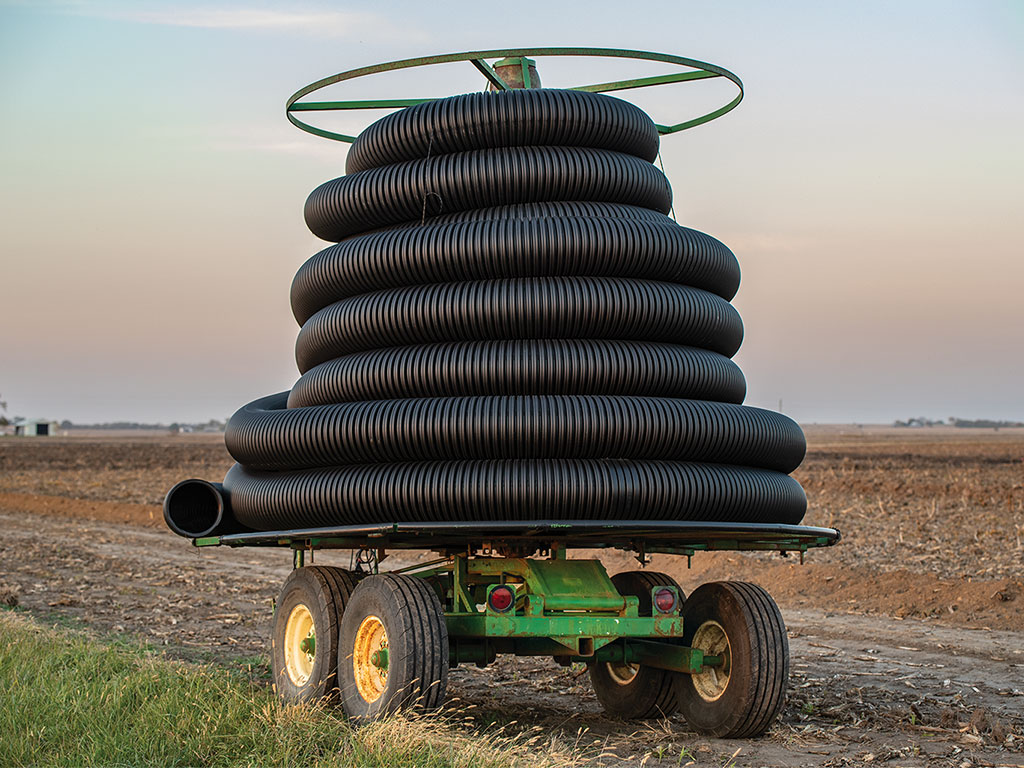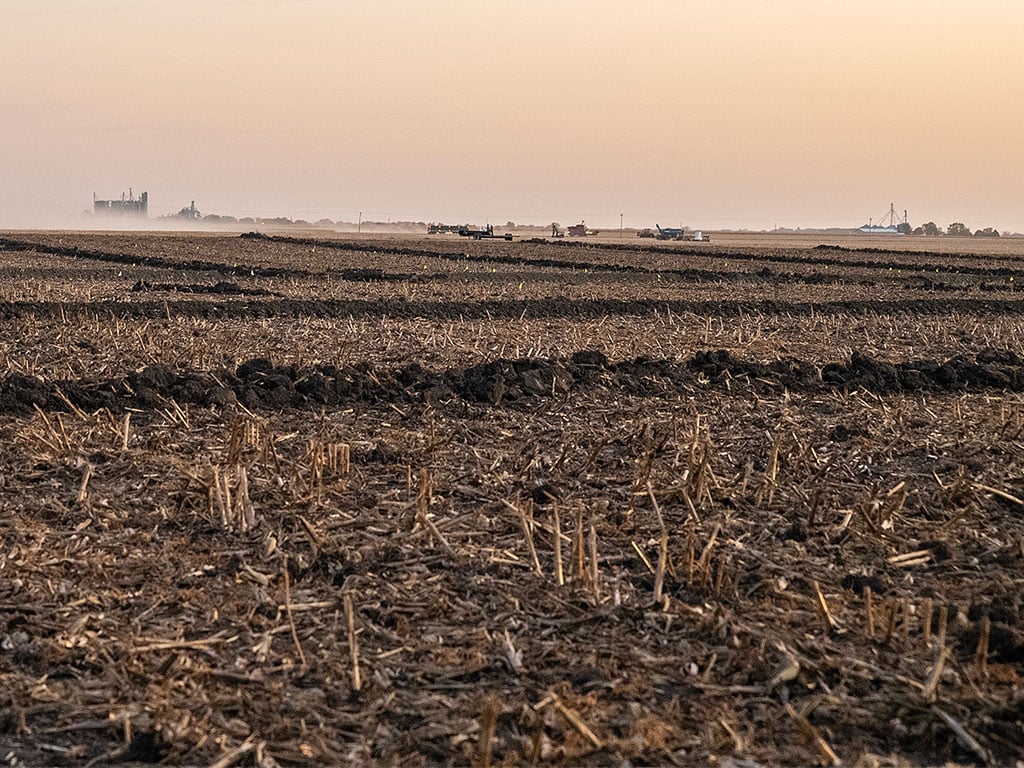Agriculture, Education February 01, 2025
Too Little or Two Much
Finding soil moisture sweet spot with drainage tile.
by Katie Knapp
The corn belt is a bit of a Goldilocks with water—there's either too much or too little and never at the right time. For nearly 200 years, drainage tile has helped farmers find the sweet spot.
Dr. Andrew Margenot, a soil scientist in the College of ACES at the University of Illinois, thinks it is time to start asking more from the underground grid. "Tiles have been thought of as very passive technology," he explains. "We throw them in there, but then we don't manage them intentionally."
Tiling is essential for sustainability, especially in extremely wet springs, he says. Quick drainage in the spring allows seedlings to build a good foundation, but that can also open the floodgates for nutrients to rush out of the field during big rain events. "It's just so complex," he adds pointedly.
How do you manage tile for better yield and less nutrient loss? What happens when you get the field dry in the spring and then it doesn't rain later in the season? Can a better system be designed?
These questions also keep Dr. Richard Cooke, an ag engineering professor and drainage Extension specialist at Illinois, up at night. Cooke has been fascinated by drainage since he was 12 years old, watching water pour from a root channel near his home in Montego Bay, Jamaica.
"I didn't come to corn and soybeans," Cooke chuckles. "I came to the mecca for drainage. Illinois has more than 10 million acres of subsurface drainage. It was a chance to practice my craft."
Since 1994 he has pioneered the research and design of edge-of-field practices like bioreactors to reduce the nutrient load in drainage water. But as climate patterns shift, Cooke sees a need to reimagine drainage systems.
Forecasting models suggest Illinois farmers may need late-season irrigation in the future as rain patterns continue to change.
"The models project that, in 10-20 years, this won't be a good place for growing corn unless there are some changes in water management," he explains. His focus has shifted to combination drainage and sub-irrigation systems, tools he believes will be crucial for better managing soil moisture in the future.
Above. Dr. Richard Cooke, ag engineering professor at the University of Illinois, says nearly all field tile installed in Illinois now is done on a whole-field pattern or grid as compared to only about 10% in 1995.
Digging in. Margenot is leading a new, comprehensive drainage tile research project as part of Illinois' South Farms where they will be able to dig into these questions from many different angles.
At the nearly 90-acre 'Alma Mater Plots,' researchers will be able to compare how different management practices impact tile flow rates, soil health, and water quality amongst other factors across 64 individual plots.
"The questions aren't that different from what we've been trying to get at for the last 20 years. But no one's been able to actually answer them with confidence because they lacked a site like this," Margenot explains with great anticipation.
Both experts believe time is of the essence. EPA nutrient reduction guidelines call for significant changes quickly.
"In Illinois, we are to reduce nitrate losses by 15% by next year, 25% for phosphorus, and then by a total of 45% by 2035," Margenot notes. "Right now, we're going in the opposite direction at those same magnitudes."
"We need more of a systems understanding, and that's why we created this research site," Margenot says. "What are the trade-offs that are only accessible at the systems level? I think that the overarching question is, how can we integrate tile outcomes better into our assessments of agriculture?"
Until new data starts pouring in, Cooke suggests farmers use the Illinois Drainage Guide to optimize their drainage systems.
He says, "Ask your contractor how to get the best bang for your buck? And more importantly, what will be required of a drainage system 30 or 50 years down the road based on projected weather patterns?" ‡
Read More

AGRICULTURE, FARM OPPERATION
Winning Water Shortcut
Tech solutions save hours, money, and stress for livestock producers.

AGRICULTURE, SUSTAINABILITY
Tech@Work
Cultivating change: A journey to sustainable farming



